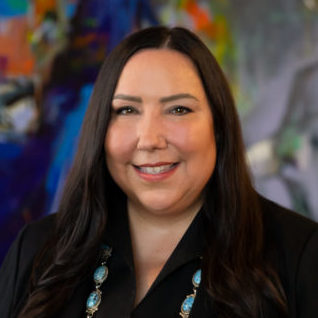As the pandemic drags on, HR professionals continue to strategize for—and, often, re-strategize for—the future of work. While many of those plans have centered on the logistics of hybrid and remote work, experts are cautioning HR leaders to ensure evolving employee expectations serve as the foundation for those strategies.

Angela Greenfeather, Mr. Cooper
For instance, as business leaders formalize policies regarding how and from where their employees will work in the long term, they should have a solid understanding of employee sentiment on this topic. For most workers, flexibility is a key driver of their perspectives, says Angela Greenfeather, executive vice president and CHRO at mortgage company Mr. Cooper.
“Team members are increasingly demanding more flexibility,” she says. “So, it’s important for companies to tune into this and bring those needs into focus in their HR strategy in 2022.”
It’s a trend being noticed across industries: In a recent study by EY, 88% of workers surveyed said they’re seeking flexibility in their working hours, and 87% also want more leeway in where they work.
In the coming months, employers will need to develop more “progressive” approaches to flexibility to remain in line with employee demands, says Perry Stuckey, senior vice president and CHRO of Eastman Chemical Co. who recently was installed as a fellow of the National Academy of Human Resources.

Perry Stuckey, SVP and CHRO, Eastman Chemical
Related: 5 new HR fellows discuss HR’s top trends, challenges for 2022
“Long-term business success,” he says, “is directly linked to long-term people success, and this requires having a value proposition that employees believe in and that encourages them to choose your company every day as the one at which they want to build a long-term career.”
Ultimately, Greenfeather agrees, employers in 2022 will be expected to create an “environment where people want to be—you have to prioritize the team member experience and activate a people-centric culture.”
While many companies have been striving for such a culture for years, the pandemic has reshaped how vocal employees are about the type of work culture they’re seeking—which will likely drive heightened attention to the issue among business leaders in 2022, says Julie Turpin, chief people officer at insurance company Brown & Brown.
As her firm gears up for a reimagining of the “future of work” in 2022, she says, leaders are aiming to layer employee expectations about culture into that strategy.
“The needs of employees are changing,” she says. “They want more than just the bonus and the salary—they want to belong to something, to feel fulfilled—those softer things.”
Julie Turpin, Brown & Brown
Concentrating on developing culture and employee experience are just a few pieces of the puzzle; employers should also ensure that they have tools in place to measure those efforts—both for current employees and candidates—Turpin adds.
And the need for action has never been more urgent, as hiring challenges amid the Great Resignation show no signs of slowing down as we head into 2022. The most recent numbers out of the Bureau of Labor Statistics, for instance, found that 4.4 million American employees left their jobs in September, prompting HR leaders to seek new avenues like “stay interviews” to try to hang on to their workers.

Michael O’Hare, Estee Lauder
The ongoing talent shortage is creating a “very volatile situation to navigate” for HR leaders—and it’s a climate that will likely remain for years to come, says Michael O’Hare, another recent NAHR inductee and CHRO of The Estee Lauder Companies, Inc.
“All of this culminates,” he says, “in HR needing to reimagine and rearchitect human capital strategies that will address [people challenges] with increased agility and adaptability.”